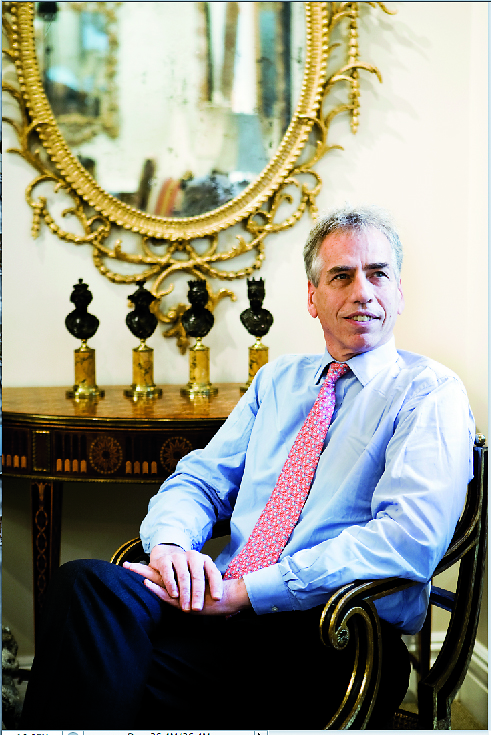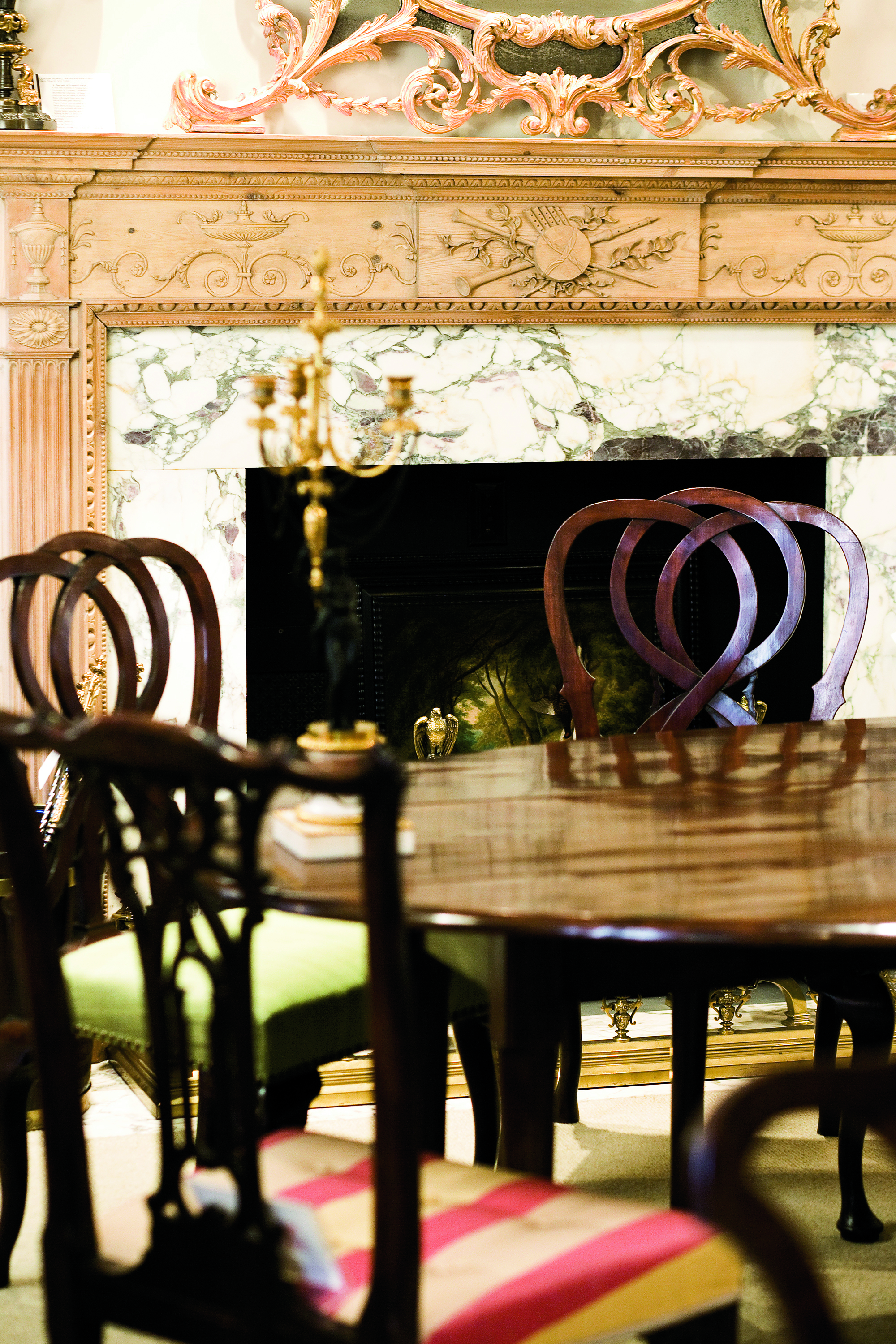
Blogs, it is sometimes alleged, trace their ancestry back to the early 1700s, to the brawling, gossipy, partisan broadsheet newspapers that spread-virally, you might say-through Britain’s newfangled coffeehouses. Anyone trying to prove the link by means of a few strands of common DNA might look into a four-year-old blog by Clinton Howell, the American dealer in English furniture of the broadsheet era. “One should not speak ill of the dead,” Howell began a post last spring, before doing just that, blasting the recently departed Thomas Devenish for, among other sins, once outbidding Howell on a tripod table that Howell told him he had put incontrovertible dibs on. In an earlier series of posts, he disparaged a pair of mid-1700s demilune inlaid consoles, sold at auction for a handsome price, so unsparingly that a friend finally called to remind him that the buyer had feelings.
In his defense Howell points out that in both cases he was only doing his best to tell the truth, a tendency, he seems to recognize, that can be a strong point or a flaw in an antiques dealer. “It doesn’t make me much of a salesman,” he says. “When I tell clients too much about a piece it can end up chasing them away.” On the other hand, Howell’s lack of spin has earned him a reputation for purity. “I’ve developed a certain respect for Clinton over time,” says Albert Sack, the ninety-three-year-old dean of American antiques dealers, who admits he doesn’t think much of dealers in English antiques as a breed. “A lot of it is presentation and fancy names-in particular royal names.” But with Howell, Sack says, “everything’s based on authenticity before provenance.”
Howell’s commitment to transparency, as truth telling is called in the business world, is his antidote to the vagaries of the antiques trade. Prices fluctuate with the fortunes of the stock market (as he expects them to do now), or with changes in supply and demand. But for Howell, demilune consoles have a worth independent of the perceptions, and certainly the emotions, of willing buyers. “Antiques can be looked at objectively,” he insisted in answer to his friend’s rebuke about the auctioned consoles. He offers as evidence the years some dealers will keep pieces on their showroom floors, waiting for a buyer who will meet their price. Similarly, his vituperation about the famously difficult Devenish might have offended some readers, but blog numbers don’t lie. “I got tremendous response to that post,” he says of the obituary.

With his nobly prominent nose and shock of salt-and-pepper hair, Howell, at fifty-nine, is the very picture of a Manhattan antiques dealer. On closer inspection, however, his appearance turns out to be as unvarnished as his opinions. His sober gray suit could benefit from a needle and thread, and he has paired it with tan trail-walking shoes, pink socks, and an unfashionably narrow Liberty of London tie. Howell grew up in Fairfield County, Connecticut, one of the richest suburban realms in the country. But after graduating in 1971 from Hobart College, where he had built a few pieces of furniture in a design class, he decided he wanted to work with his hands. With his brother David, today a prosperous product designer, he floated to England, where the hip and hippie scenes were still thriving side by side. “For something to do,” he says, he enrolled in the London College of Furniture. “I was not a great cabinetmaker and I couldn’t stand the sound of machines,” he remembers, “so I took to finishing.” His teachers in the college’s restoration department were mostly working-class craftsmen who introduced Howell not only to the properties of shellac, but taught him about what it takes to excel at a methodical task.
Howell spent his free time visiting Britain’s remaining great houses-Holkham Hall, where he steeped himself in interiors by William Kent; Claydon House with the carving of Luke Lightfoot; and Harewood with ceilings by Robert Adam and furniture by Thomas Chippendale. (Adam remains Howell’s paragon. His review of the iPhone on his blog compares the upstart technology to the unequaled satisfactions of a gilded Adam settee.) Between his restoration classes and his weekend field study, Howell became an expert on different timbers, their uses in different periods, and when they began showing up from remote parts of the Empire. “I could spot an Anglo-Indian table labeled English and know by the wood that it was produced in India.”
With that kind of intense immersion in English furniture’s golden age, from the fundamentals to their most glorious incarnations, it is no wonder that expertise-and not salesmanship-became the basis of Howell’s business. For him, expertise is value. “This game is all about getting out there and finding things, finding things, finding things,” he says, “but the deal is in knowing what you’re looking at.” He counts on auction houses and freewheeling dealers-those whose business is based on volume, not precise knowledge and valuation-to turn up goods without knowing quite what they have. At an auction last year he noticed an undistinguished chair that, except for its having arms, reminded him of a group of side chairs he knew from Houghton Hall. Suspecting that the arms had been added by an intermediate owner, he snapped it up. Restored to its original form, it appeared on the cover of Sotheby’s Important English Furniture Sale last October and sold for more than $43,000.
About the time Howell returned from England, in the mid-1970s, to start a restoring and polishing business in Bedford, New York, English furniture was enjoying a boom. The vogue for sleek, modern interiors was waning, bringing new buyers into the market, and though the flow of treasures from England’s vanishing country houses was beginning to slow down, “the values were tremendous,” Howell says. “You could pick up a Gainsborough chair for $25,000 at auction and it would be worth $50,000 a week later.” Christie’s opened its outpost in New York in 1977, and two years later Howell sold his first piece of furniture.

But as more money flowed into English furniture through the 1980s, “the force behind the market started changing from passion to investment,” he explains. “A lot of clever people”-the amateurs-“saw it was time to get out. A sale at Sotheby’s today is 80 percent professionals,” he says, by which he means dealers and full-time collectors. Since the 1990s, the professionalization of the market has accelerated. Great buys are rare, and only at the highest prices. Demand for expertise like Howell’s is at a peak. “At this level, you don’t want any surprises.”
Such high stakes, especially amid economic blahs, drive newcomers into other categories. The recent rise of contemporary furniture, he thinks, can be charted closely against the locking up of the English trade by expert buyers. “It’s already a painful process for newcomers because they don’t understand the details. Then they are simply gobsmacked by the price.”
This situation, Howell says, has provoked attempts to democratize the antiques business. He reports that in the run-up to this month’s Winter Antiques Show, organizers have urged dealers like him to make sure their displays include something for everyone-entry level buyers as well as big-money buyers. He finds this approach to the trade anachronistic. “It’s an elitist hobby-from the point of view that it takes money. If they want to shake things up, they should excise some of the American dealers and look for something entirely different. Too many highboys get tedious.”
Howell finds hope for the English antiques trade not in broadening the base, but in educating the few who are inclined to learn. He draws comfort from a young man, the son of a steady client, who comes into his shop to ask about certain pieces-and, one gets the impression, to listen to Howell. “Some people just love this knowledge,” he says. “The initial focus is hard, but once they grasp the details, they are customers for life.” As long as there is money out there (and Howell insists there is, despite Wall Street’s woes), English antique furniture will inspire isolated outbursts of passion. He recalls a young woman who visited his shop with her decorator, who wanted her to choose a table. Instead she fell in love with an eighteenth-century chandelier and paid a quarter million dollars for it on the spot.
What we are to take from this story is hope, and for more than the future of Howell’s business. In a cluster of blog posts last fall, he praised John Steinbeck’s novel East of Eden (1952), which he had recently finished reading. Thinking about his admiration for the book leads him to lament that we are inundated with information but little in the way of reality. In Howell’s world, by contrast, one knows what one knows. He quotes Steinbeck: “The truth is more permanent.”
